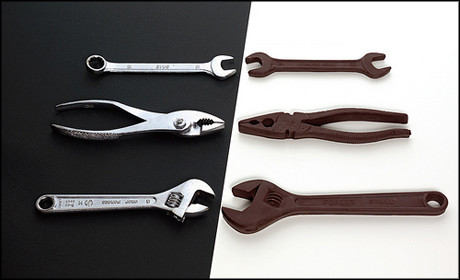
Digital First Media (DFM) have announced a new venture to address the production of news and promote the use of digital tools, techniques and ideas across local newsrooms.
Project Unbolt, so named after DFM chief executive John Paton described digital as "a bolt-on to our strategy" at a meeting of senior editors and again in a presentation to the Online Publisher's Association, will begin by assessing the digital output at four local newsrooms.
"Having visited all of the newsrooms, it's largely fair that in most or all that print culture and print workflow are still dominant in important ways," Steve Buttry, DFM's digital transformation editor, told Journalism.co.uk. "To overuse our metaphor, we need to wrench that free and say digital is more important to us."
At DFM the digital audience surpasses the print audience in almost every market, said Buttry, and company-wide strategy needs to recognise that digital "is our future".If you give people new tools and expectations you get changes quicklySteve Buttry, Digital First Media
"We need to be digital newsrooms that still put out a newspaper from digital content we create," he said, "but we need to change key parts."
As such, senior editors have drawn up a list of characteristics for an 'unbolted' newsroom, on which the Berkshire Eagle, El Paso Times, Ohio News-Herald and New Haven Register will assess themselves using a Google form created by Buttry and look to make improvements in the coming months.
The characteristics, as listed in a blog post, where Buttry plans to expand on the details in due course, are:
- 'Coverage and storytelling'
- 'Processes'
- 'Engagement'
- 'Planning and management'
- 'Mobile'
- 'Standards'
Editors and newsrooms will then work to improve on areas in which they feel they are currently lacking.
In terms of coverage, Buttry said DFM newsrooms "want to move to live coverage as a default setting" for diary or time-sensitive events, while newsworthy elements of longer, more time-intensive stories will be reported digitally before a comprehensive print publication.
"Does the first story plant the flag in the ground, start a conversation and do some crowdsourcing?" he asked. "And then it unfolds in digital formats with interactive databases and live chats and we might publish documents online, similar to what the Guardian did with the MPs expenses, and ask the readers to help find stories."
"If we publish something online on a Wednesday, because it's timely, then after a few days of discussion we'll publish it in print on a Saturday. It doesn't need to be online the day before if it is in print," he said of how the digital and print processes may change. "These are the things we'll be working on, and becoming more efficient at, in the print production from the digital content."
The use of digital tools and data will also be important, he said, and experts at Thunderdome, DFM's nationwide network for editorial support, will visit newsrooms to train reporters and pass on skills.
"In a perfect world every journalist would have a certain level of data skills," he said, "Computer-assisted reporting would be like notebook-assisted reporting or telephone-assisted reporting."
Last year, DFM announced a partnership with micro-video platform Tout and equipped reporters with smartphones to let them post short news reports.
"From our experience," he said, "if you give people new tools and expectations you get changes quickly. It's a combination of giving people tools, giving them training, making it a priority and then recognising good work."
Free daily newsletter
If you like our news and feature articles, you can sign up to receive our free daily (Mon-Fri) email newsletter (mobile friendly).









